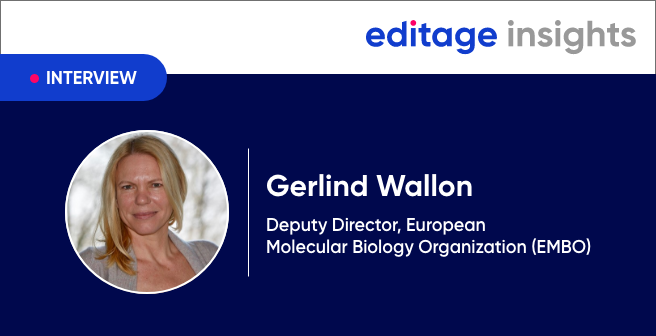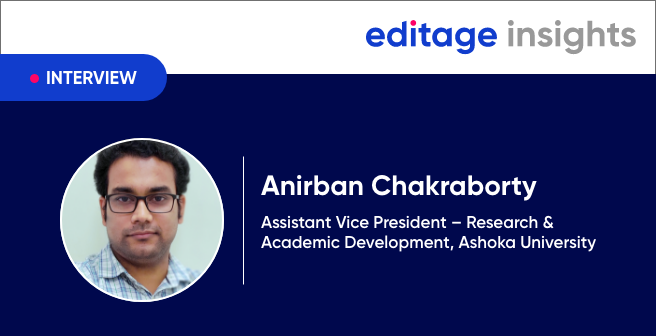CEBIMar–Making science more accessible to the local Brazilian community

In this interview, Alvaro E. Migotto, former Director of the Center of Marine Biology (CEBIMar) at the University of São Paulo in Brazil, tells us more about how CEBIMar evolved over the years and reveals some of its unique challenges as a small marine research institution. He emphasizes how CEBIMar, as an ocean-front laboratory, has an edge over similar marine research institutions in Brazil. Also, being a small research institution, has its own advantages, Alvaro reveals, as CEBIMar enjoys greater autonomy and freedom to experiment with its programs and teaching methods. The highlight of the interview is our discussion about CEBIMar’s achievements. Not only has CEBIMar had an impact among the researchers associated with it and has created a dynamic environment conducive to learning and research, it has also managed to bridge the gap between scientific research and the public by popularizing science in unique but effective ways such as photographic exhibitions and online databases of marine images. It is heartening to view such dedicated efforts towards making science more accessible to the non-academic community.
More about CEBIMar: The Center for Marine Biology (CEBIMar) is a specialized institute of the University of São Paulo (USP) devoted to research, teaching, and outreach in this field.
More about Alvaro E. Migotto: After completing a degree in Biological Sciences from the University of São Paulo in 1978, Alvaro obtained a Master’s (1984) and Doctoral degree (1993) in Biological Sciences (Zoology) from the University of São Paulo. He is currently Associate Professor at the University of São Paulo. He is mainly interested in Systematics and Cnidaria Biology. He served as the Vice-Director at CEBIMar from 2001-2005, after which he served as Director of the institution until 2009. Alvaro has authored over 70 journal articles, 4 books, over 25 book chapters, and several conference proceedings and magazine articles, in addition to contributing to several bibliographic productions. He also participates in certain aspects of policymaking; teaches at the graduate and postgraduate level; and supervises young researchers in the field.
For how long have you been associated with CEBIMar? Could you tell us about your trajectory at the Center?
I first learned of CEBIMar during my undergraduate studies in Biology at the University of São Paulo (USP). Still during my first year at College, I was lucky to get a spot in one of the introductory courses to Marine Biology offered by CEBIMar. In the following years, I went back a few times to CEBIMar for instructive excursions. But only during my Master’s degree did I start visiting the Center more assiduously. My early interactions and experiences at the Center were always remarkable and reinforced my fascination with the institution and the coastal region of São Sebastião. So I was pleasantly surprised when I learned, in 1981, that there was an opening for a biologist at CEBIMar. Surprisingly, at the time, few people wanted to live outside the city of São Paulo, and I was fortunate to be one of those selected to fill this position. I completed my Master’s and PhD in CEBIMar (as a student of the Zoology Program in the Biosciences Institute of the University of São Paulo, IBUSP) and, in 1996, I joined its faculty. I was Vice-Director and Director of the Center. Over the years, I have been part of the history of CEBIMar and have actively participated in the main stages of its recent evolution.
Which have been the main achievements of CEBIMar? What are the unique characteristics of the Center compared to other marine research institutions in Brazil?
CEBIMar is one of the oldest Brazilian institutions that focus exclusively on Marine Biology. At the time, what made the institution unique was its proximity to the sea. Most other marine research labs or institutions in Brazil were located far from the sea and/or did not have the basic infrastructure necessary for conducting fieldwork or maintaining organisms in a laboratory setting. As a result, they faced many challenges. Often, for example, the target organisms of a study did not even survive during their transport from the coast to the laboratories in the city of São Paulo. But since CEBIMar is situated close to the coastal areas and has easy access to a wide variety of marine environments, no such issues occurred. This is why I maintain that CEBIMar’s location is one of its prime strengths. Initially, CEBIMar mainly offered support to other units in the University of São Paulo (USP), but over the past few decades, it gained full autonomy. We also got resident faculty and attracted a substantial number of graduate students, post-doc researchers, and several collaborators who work in different specializations of Marine Biology.
CEBIMar is focused on research and education. Although there are no undergraduate or graduate courses at the Station, how do you train your students academically?
The Center was created in 1955 with the aim of promoting marine research. But Marine Biology teaching was among one of the main concerns since its foundation. So we began with basic courses in Marine Biology for students and biologists, and we continue to run these courses successfully even today. In addition, our faculty are equipped to run several undergraduate and graduate courses on a yearly basis. The content of courses is directly related to the research activity of the station’s researchers, which enables efficient teaching and discussion of fundamental theoretical concepts of scientific practice. In addition, all courses are conducted in condensed and intensive modules, and run for 7 to 15 full days, often relying on the collaboration of visiting professors. We provide accommodation and meals to students and employees, to optimize the time we get during the course. This, and the relative isolation enjoyed by CEBIMar due to its proximity to the edge of the São Sebastião channel and an Atlantic Forest reserve, provide a favorable environment for study and reflection. The result is always very positive: both students and teachers feel that our privileged situation enhances their learning.
An independent and full-fledged graduate course is one of our latest aspirations and we are in the process of making this dream come true. Our biggest challenge is building a strong faculty — we currently have six professors, including me; less than a decade ago, we were only three. However, we recently found a solution to this problem in our proposal for an inter-unities graduate course. With a primary focus on Marine Biodiversity, the program will be held at CEBIMar, in São Sebastião, but will rely on the contribution of Faculty from other USP units, including the Institute of Bioscience (IBUSP), Institute of Chemistry of São Carlos (IQCS/USP), Institute of Biomedical Sciences (ICBUSP), and the Oceanographic Institute (IOUSP). The program will also be supported by a global team of visiting professors who have collaborated with our intern faculty in the past. Our proposal for the course is currently being evaluated at the internal university level, after which it will be forwarded to CAPES. We’re aspiring to launch the graduate course by the end of 2017, or in the first half of 2018. Although the CEBIMar does not offer a graduate course, this does not mean that all my colleagues and me are not qualified to mentor or teach post graduate and doctoral students. We are qualified as supervisors in other USP programs. Thus, despite our limitations in size and structure, we form a dynamic academic community with the students who join our researchers (postdocs as well as technical and undergraduate research fellows).
And what about the research conducted at the Center?
CEBIMar is one of the smallest USP units, both in area and number of employees and professors. However, this does not mean that our scientific and academic production is of low quality. In fact, it is quite the opposite. Our infrastructure and technical and academic services enable us to perform educational and scientific work of high quality. Although we are free to establish and perform our own research programs and projects as well as teaching and extension courses—something we’ve been doing more intensely and with greater independence—our work is also valued by the Board of Directors and all people directly linked to CEBIMar. The advantages of our small-scale infrastructure and institutional design are numerous, from varied opportunities for interactions between interns and outside partners to optimum use of available space, equipment, and services. Because we have been doing this for over 60 years, we’ve ended up creating a very efficient system to manage research projects supported by CEBIMar, which includes managing administration, IT staff, librarians, laboratory technicians, and professors. We also share our laboratories and equipment with external partners, thereby avoiding redundancy of equipment and services. Consequently, the available infrastructure is used optimally and worth our investment. In some respects, a smaller research center allows agility, especially in administration and planning. Therefore, it seems to me that we often use the financial resources we have at our disposal better and more efficiently compared to larger institutions. Yet, we also have expansion plans by improving our facilities and adding more faculty.
How important is international collaboration for CEBIMar? Do you receive many international visitors? Are people from CEBIMar encouraged to pursue research abroad?
Internationalization of Brazilian science has been acknowledged as virtually indispensable in the achievement of the desired standards of excellence and quality. In recent years, research funding agencies as well as the USP have been aggressively encouraging cooperation and international exchange by various means. These include granting individual scholarships and announcing calls of public cooperation from other funding agencies or foreign universities in scientific and technological research. Professors, students, and postdocs linked to CEBIMar have effectively taken advantage of these opportunities. In recent years, almost all of our masters and doctoral students are developing or have developed part of their masters or doctoral degree to pursue further research abroad, an experience considered indispensable both by students and by their advisors. Basically, in the context of CEBIMar, initiatives favoring internationalization are taken within the research groups that consist of our faculty and international collaborators. Some of our courses are taught with international collaborators, who also supervise some of our graduate students. These initiatives have been effective in helping the Center establish important networks for international scientific cooperation and we may soon establish specific short-term collaborative arrangements at an institutional level. For example, after the establishment of our graduate program in Marine Biodiversity, a natural offshoot of this trend of internationalization will be to establish agreements that help us offer double degrees at the masters and doctoral level.
How are researchers and students affiliated with CEBIMar encouraged to publish their research in international quality journals?
This is largely still restricted to research groups to the domain of the supervisor/student relationship. There has been a clear growth in the scientific output of CEBIMar over the years. Over the past five years, we can see a clear growth in the number of articles published in indexed journals. However, during this period, the impact factor of these articles, which can be considered good, remained more or less stable. The challenge in the coming years is to improve the quality of production. The increasing international cooperation and the functioning of our future Marine Biodiversity graduate program should have a positive impact and help us increase our scientific output.
Does CEBIMar provide other services to the local community of São Sebastião, besides the popular monitored visits? Could you comment on the importance of interacting with the coastal population of the São Paulo State?
CEBIMar has an old history of scientific disclosure and education activities. The northern coast of São Paulo, the region where CEBIMar is located, lacks higher education institutions as well as initiatives to popularize science. The main avenue for ensuring CEBIMar’s interaction with the local population is the Monitored Visits Program, which has existed since mid-1980s. Besides creating informative printed resources and attending and organizing exhibitions, we also create educational content to be made available online as photos, videos, educational texts, news, games, and virtual exhibitions. Primary, high school, and undergraduate students can get their questions answered personally by visiting our library, browsing our institutional website, or via e-mail. Occasionally, our faculty also serve as advisors to environment protection agencies and policymakers. Holding talks is another way to involve the local community. A successful example of interaction with the community is the Science Club, CEBIMar’s partnership with a public school in São Sebastião. The main objective of the Club, which was established in 2013, is to familiarize 8th and 9th grade students with scientific thinking and methods, through field and laboratory observations, guided studies, discussions, conversations with researchers linked to CEBIMar, etc. Under the guidance of our facilitators, students develop small research projects in Marine Biology. One of the expected results of this initiative is the selection of candidates for research fellowships, such as the Junior Scientific Initiation Program of the National Counsel of Technological and Scientific Development (CNPq). Besides helping us find young scientists, the Club also has the potential to improve scientific teaching in public schools, because it sort of demystifies the field and indicates new, efficient, and exciting ways for students and for teachers to approach science in class.
You have been involved in science communication initiatives in Marine Biology for a long time. Could you tell us more about this? Did you actually follow a strategy to popularize Marine Biology? Was it successful? Can such a model be implemented by other institutions?
The popularization of science has always interested me. I believe that the dissemination of scientific information and education should be an integral part of any scientific research activity. Although until recently, this work was underrated by the Brazilian academic community, there is increased openness towards initiatives to popularize science among the public. In fact, the work done by my colleagues and me has always been encouraged by CEBIMar’s Directors (it is worth mentioning that scientific disclosure and environmental education are among the primary aims of the Center). Although in most cases, the financial resources allocated to these initiatives are scarce or even non-existent, my work in CEBIMar has given me many opportunities in this regard. Since my arrival in São Sebastião, I have been involved in many of the scientific communication initiatives promoted by CEBIMar to varying degrees. In addition to the Monitored Visits Program that I helped set up in the 1980s, the photographic and scientific exhibitions held by us over 10 years have become extremely popular among researchers and non-researchers alike. Three of our exhibitions — two photographic and one on life evolution — attracted over 100,000 visitors from across the country and a greater number of virtual visitors who had full access to images and other content through the following websites:
- Ocean, hidden life: http://www.usp.br/cbm/oceano/
- Life, the Sea, and Many Stories to be Told–The Origin of Biodiversity in the Oceans: http://www.usp.br/cbm/expovida/?lang=en
- A photo exhibition commemorating the 60th anniversary of CEBIMar: http://cebimar.usp.br/expo60/index.php/pt/?view=slider&id=1
I must also mention the website Cifonauta — http://cifonauta.cebimar.usp.br/ — a large and free open access database of Marine Biology images, which are a direct product of the scientific research and teaching activities performed by students and researchers linked to CEBIMar. Students, teachers, biologists, oceanographers, artists, and those interested in Marine Biology in general can access hundreds of images of marine environments and organisms, including live images of marine life. Content can be browsed using filters or an advanced search.
Can this content be re-used, shared, or downloaded for free? What are the terms of use?
The Cifonauta content is available under a Creative Commons Attribution Non-Commercial Share-Alike 3.0 Unported (CC BY-NC-SA 3.0) license. This license allows sharing and reuse of text and images for non-commercial purposes without prior consent permission from the original author(s), if the source and author(s) are properly cited and redistributed under a compatible license. Authors hold copyright over their images.
Congratulations on your photo exhibition! The marine life images are beautiful and impressive. What message do they convey to the viewers? What do you expect the public to learn from the photographic display?
Among all exhibitions organized by CEBIMar, this event relied on the exhibits to convey a message or a story. While this content is clear to the photographers and exhibition organizers, I believe that each photograph has the potential to go beyond, depending on the perspective and experience of each viewer. For some, the images evoked memories of the past (old caiçaras reminded some of native coastal residents, for example), while for others, they evoked a reflection on the origin of life and the role of humans in nature. Since this exhibition was also able to evoke such a range of responses, I would consider that an achievement. Also, people had the opportunity to see images of unique creatures that are rarely discussed in the media, mainly because the focus is almost always on “charismatic megafauna” such as whales, seals, or colorful marine beings. These animals are fascinating and important creatures, and one of the messages we want to convey through our exhibitions is that the balance and health of our planet, even the survival of the human species, depend on a series of small organisms that are rarely seen or appreciated by non-specialists. “We are here, too!” was the originally chosen title for this commemorative exhibition, because that phrase captures our thoughts effectively.
You have published several papers in the course of your career. Do you have any manuscript preparation or submission tips for young researchers who look to you for advice?
An important tip is that you must never be satisfied with the first versions of your text, be it a report, a thesis, or an article. Writing a scientific text requires a lot of time and reflection. It is common for students to not understand the importance of revising and refining what they write. Scientific writing is one of the most important, if not the most important, stages of the scientific process. And when students’ lack of understanding about its significance is coupled with poor written communication skills, the situation worsens. I must add that poor written communication skills can usually be attributed to a lack of basic school education and the habit of fast and uncritical writing used in electronic media. By uncritical writing, I refer to output that has not been critiqued or reviewed by students or their peers. Fortunately, in recent years, manuscript writing and preparation have gained a lot of importance in academia and are being talked about through specialized books or the Internet. Thus, resources on these critical aspects of scientific research are more easily accessible and more and more people are aware of their importance. However, I feel (and so do my teaching colleagues) that despite the availability of such resources, students still need guidance when writing and preparing manuscripts for submission and the simple tips I shared above continue to be useful.
Thank you, Alvaro!
Note: This interview was conducted by Jayashree Rajagopalan and Karin Hoch Fehlauer Ale.



